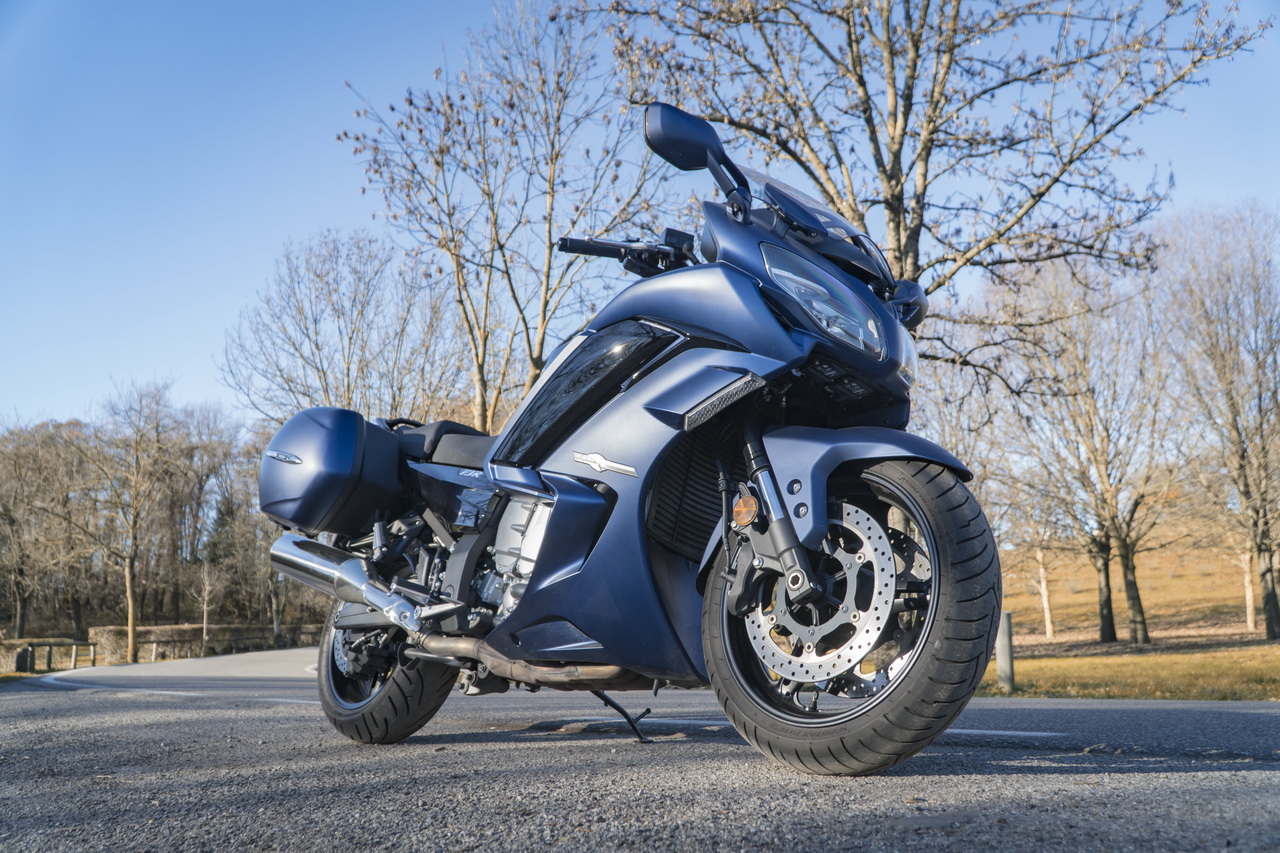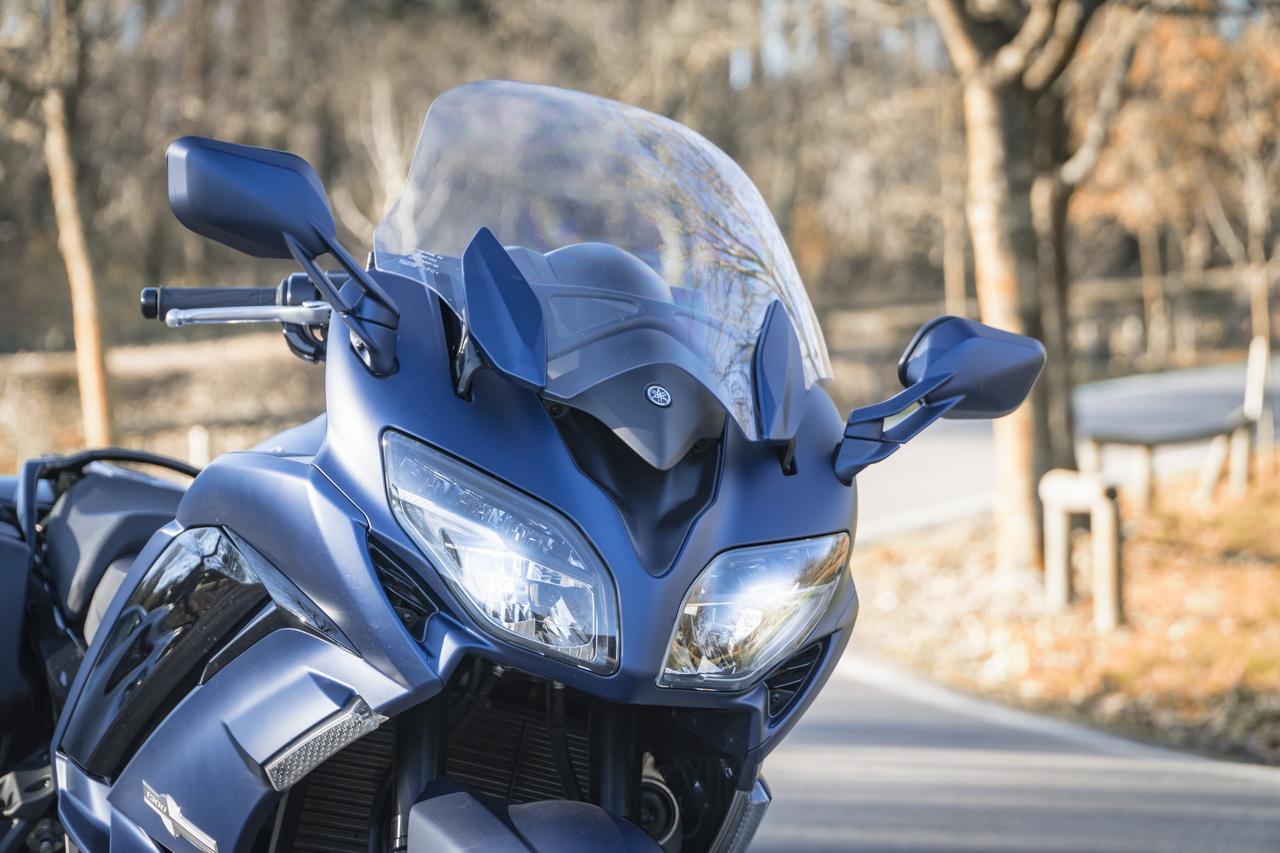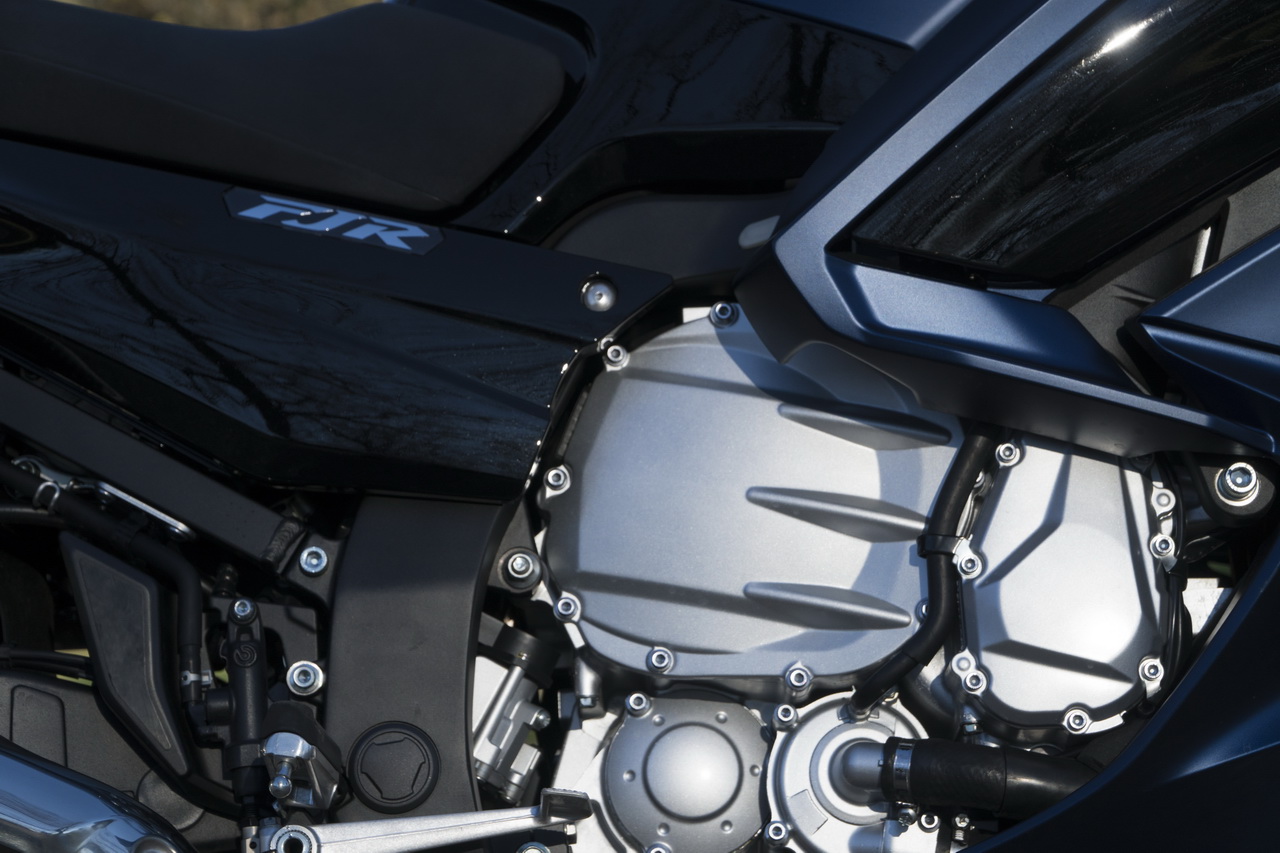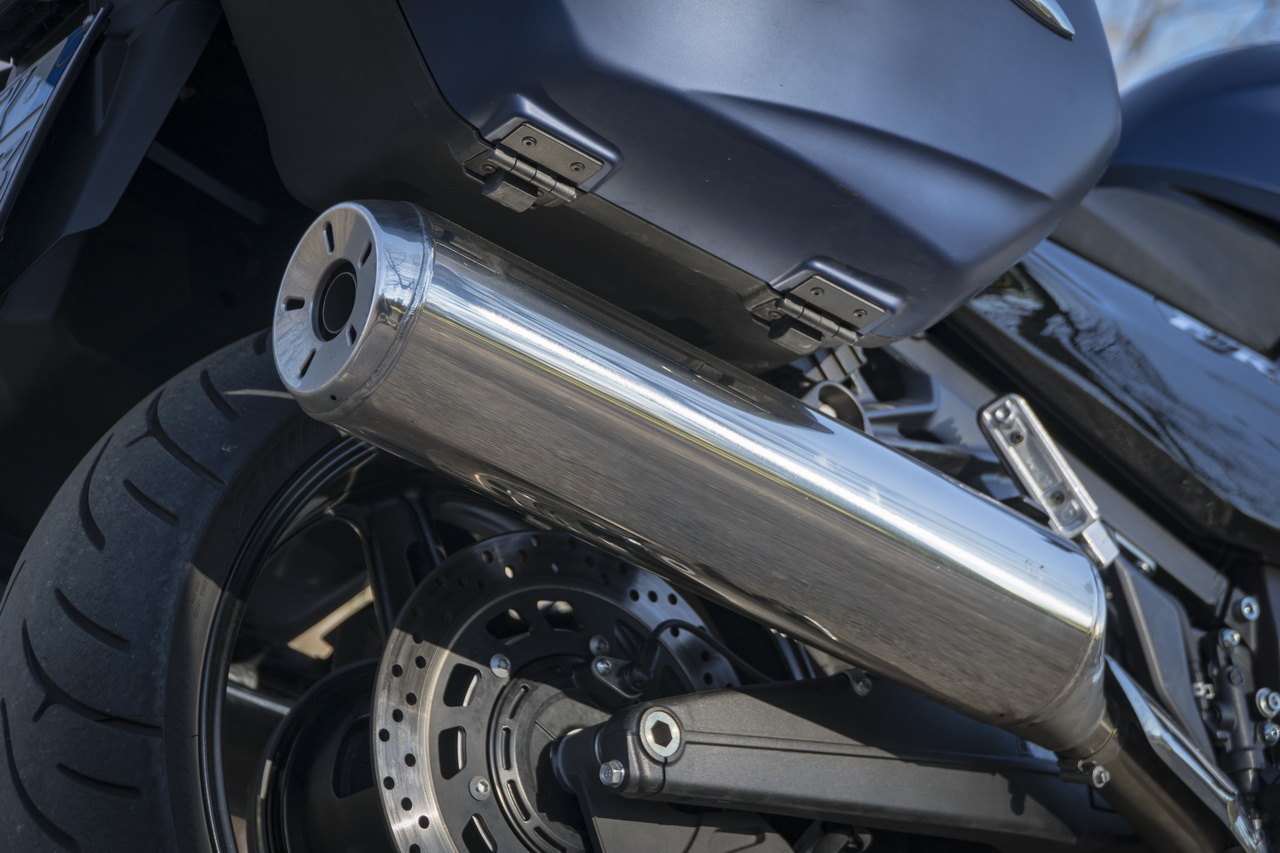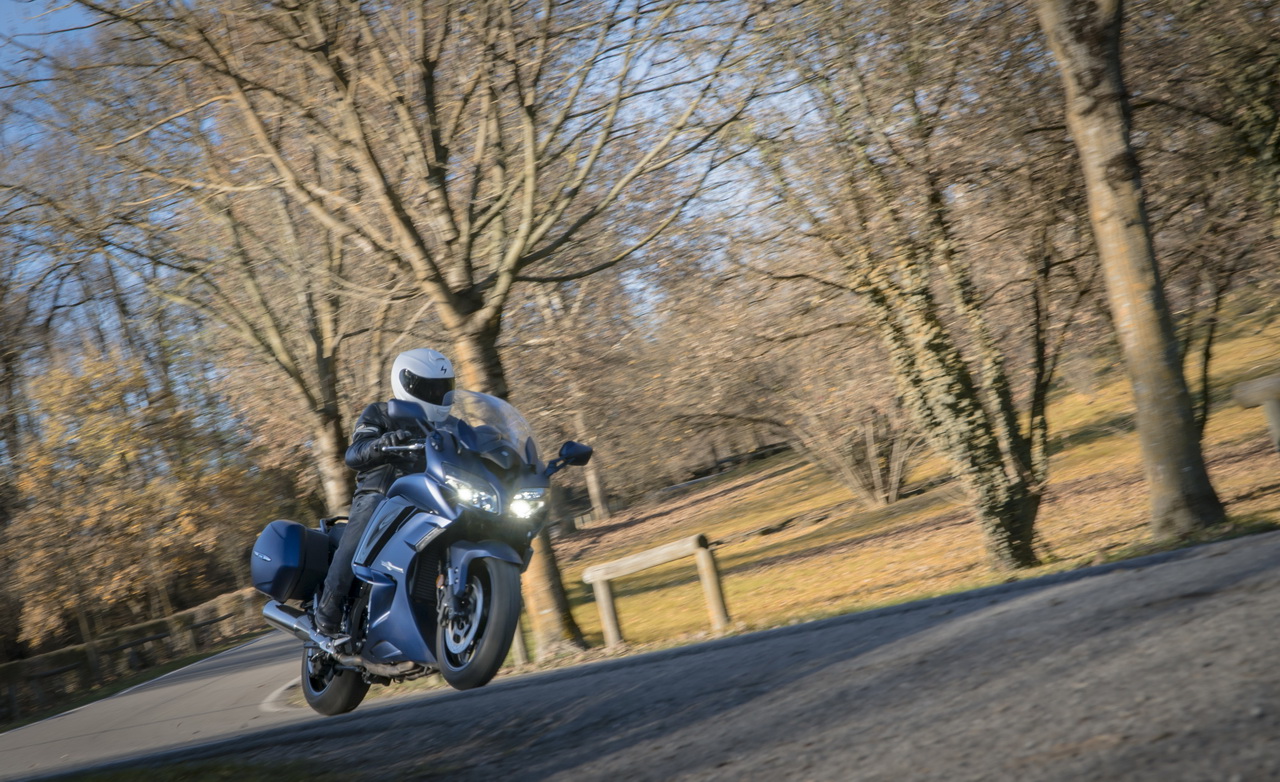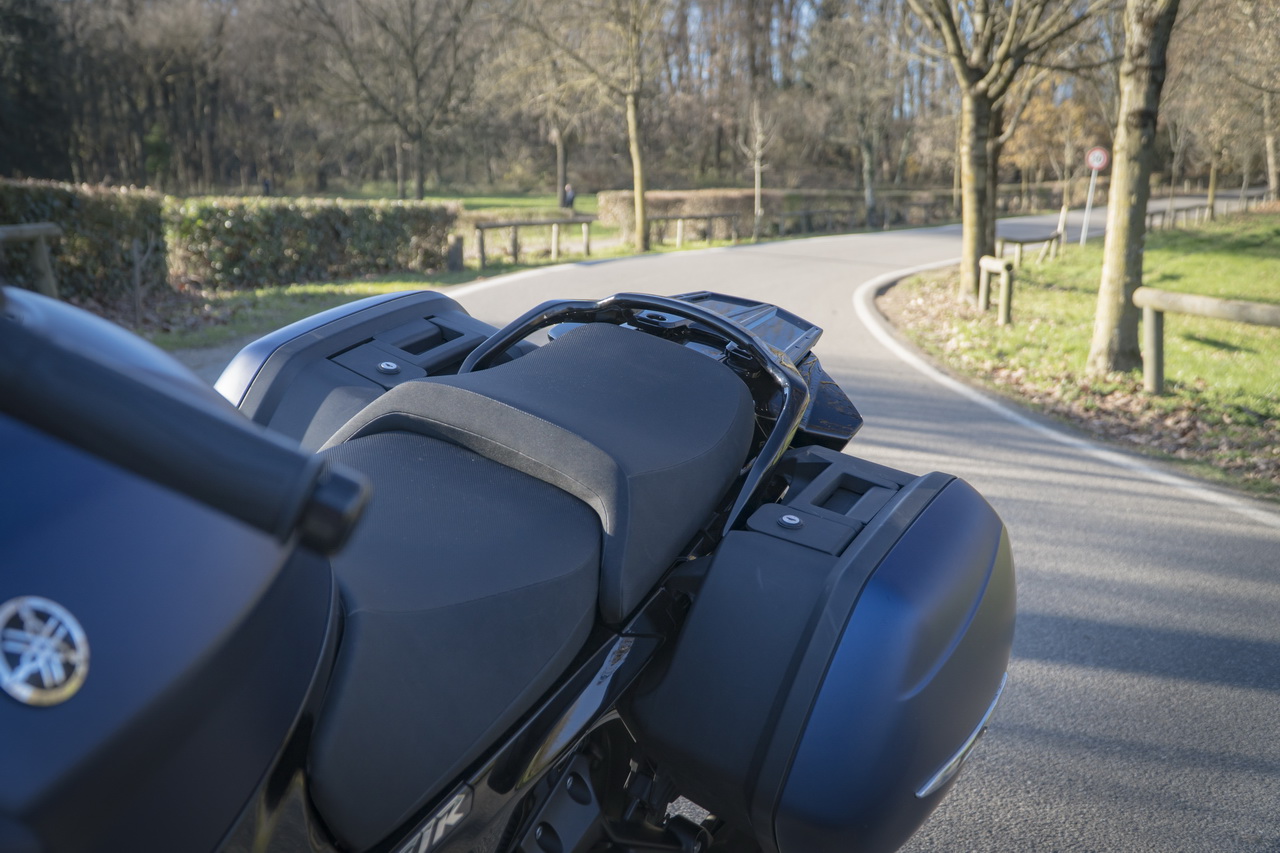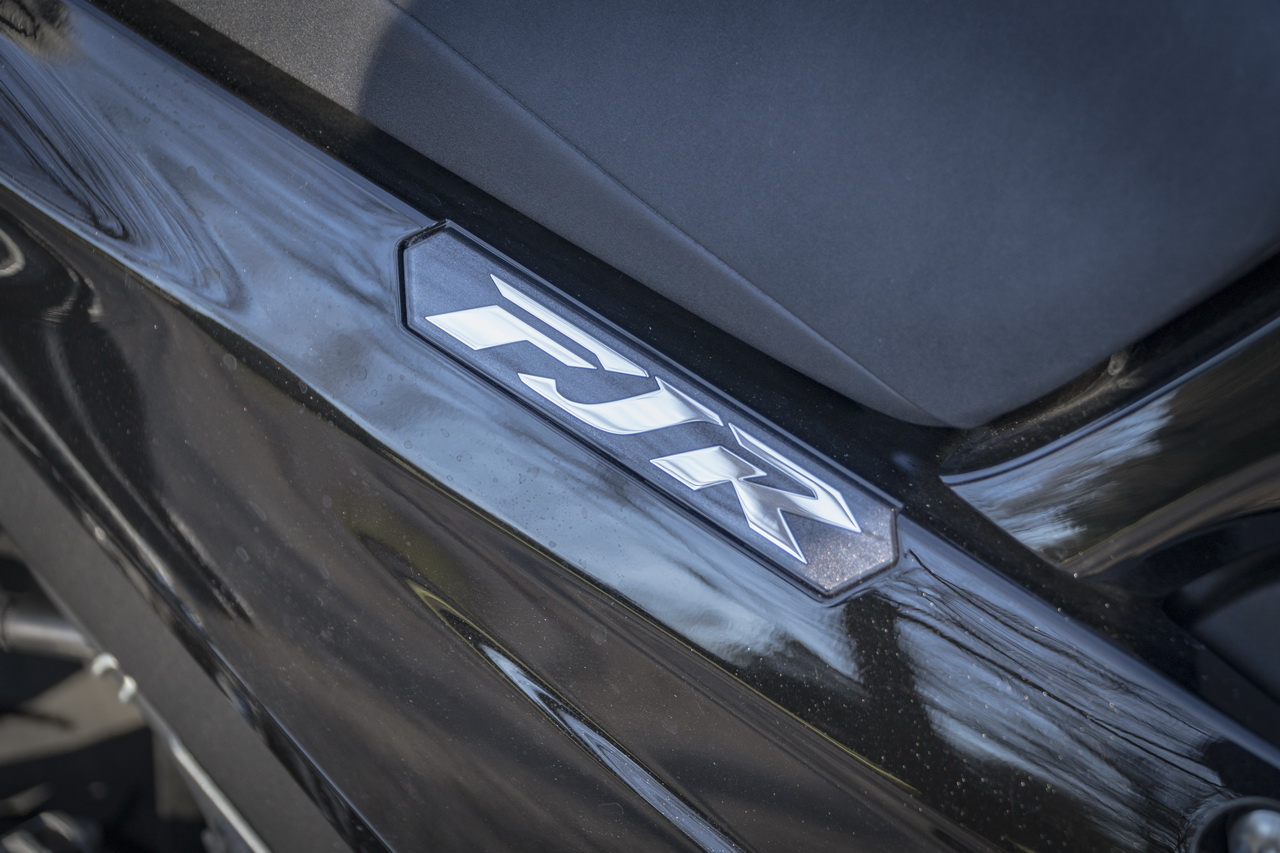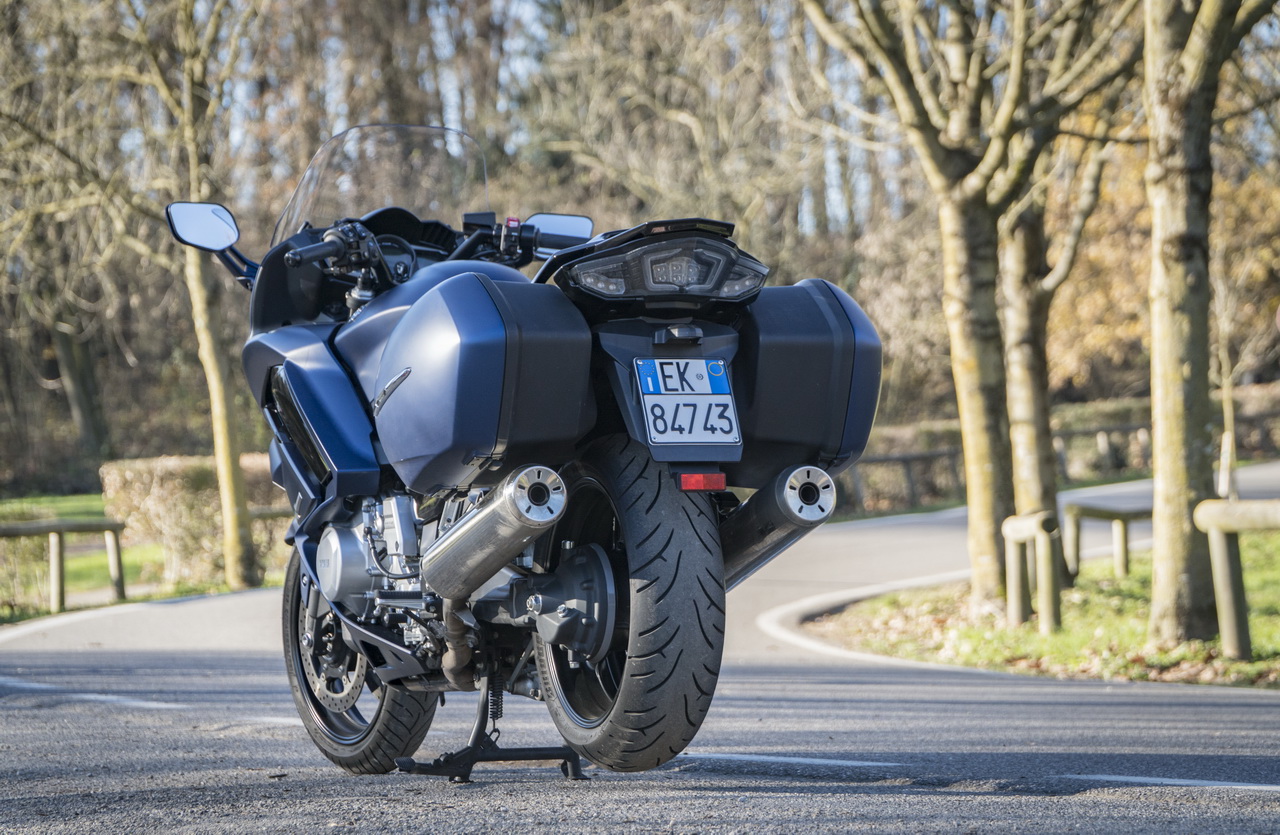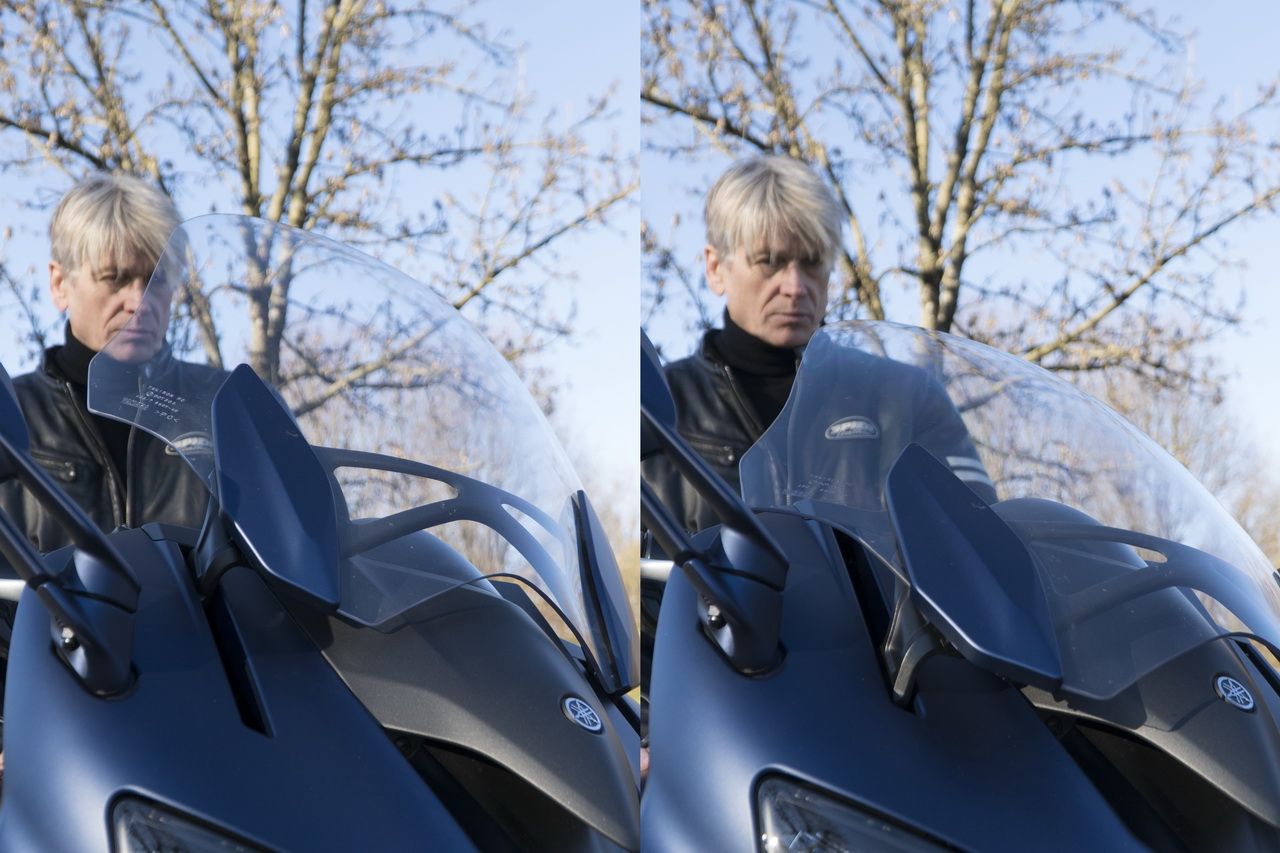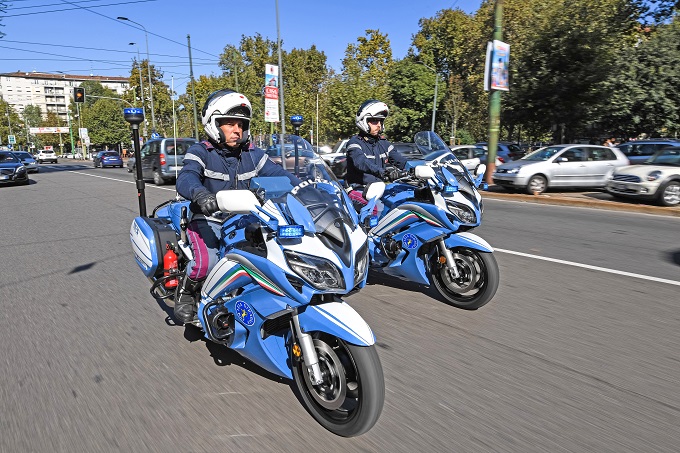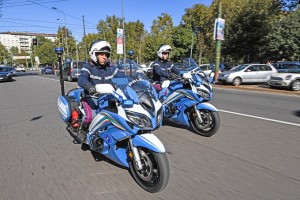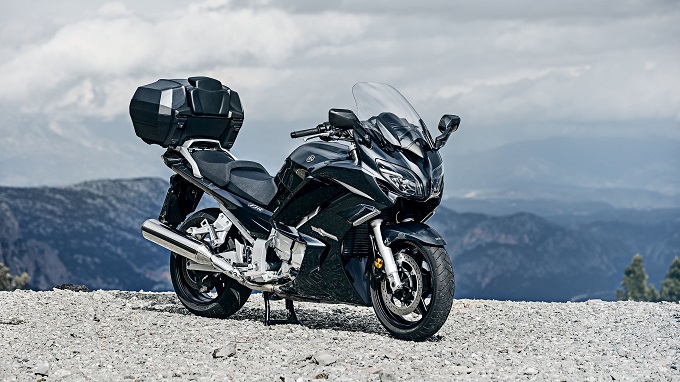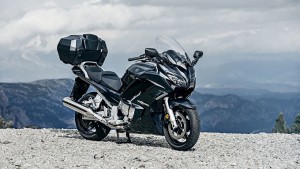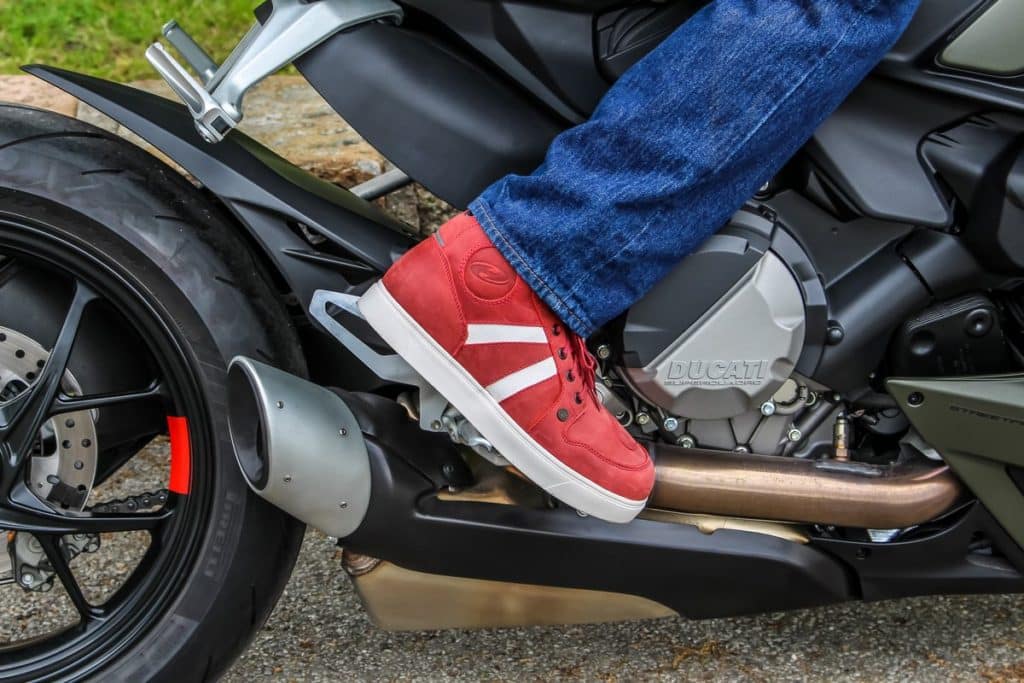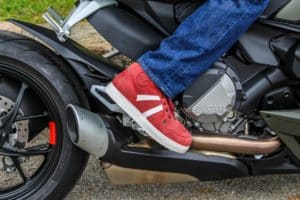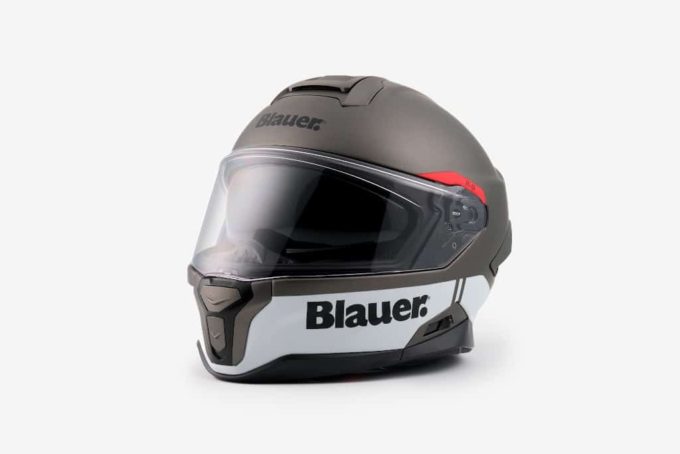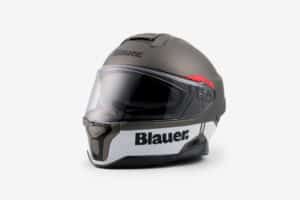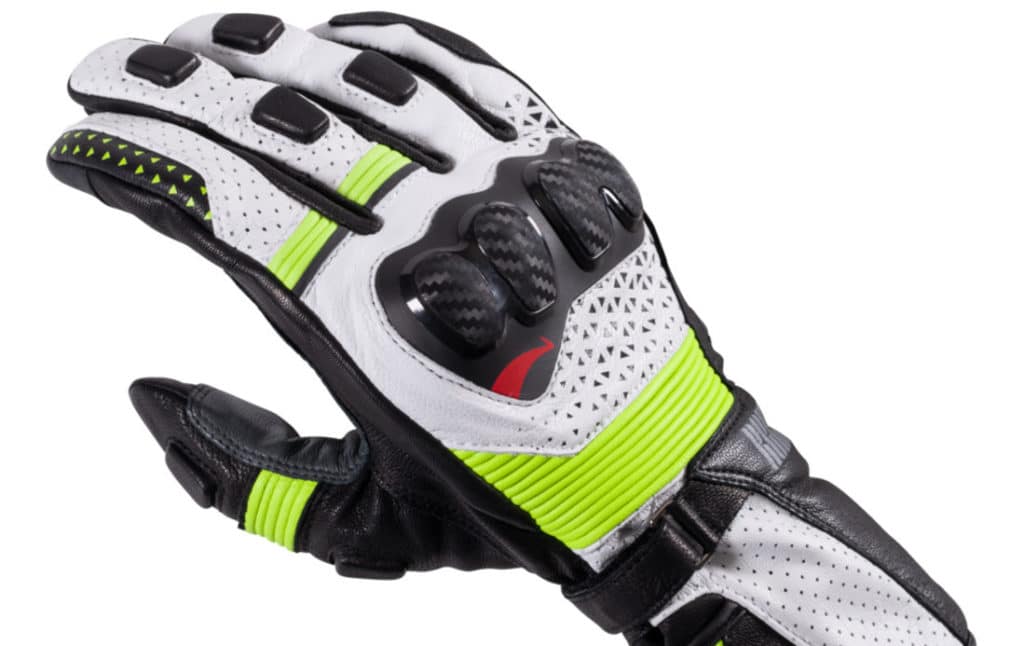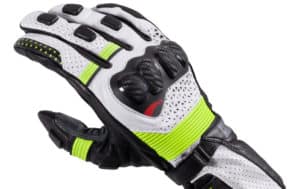Yamaha FJR1300 AS: high performance touring doesn't get old [ROAD TEST]
The timeless tourist maxi turns 18
Yamaha FJR1300 AS What a wide range of Yamaha sport-touring models! Not for the number of models - nine but conceptually three - but for the philosophy. On one side there is the futuristic Niken three-wheeler, in the middle the very young Tracers and then there is She, her majesty the stainless FJR1300. Born almost eighteen years ago from an evidently successful project - the great sales success in Europe confirms this - it has been the subject of extensive updates over the years. The last one, two years ago, brought something more, particularly in terms of electronics (full details here), but the basis remains that of the excellent debut FJR1300.
The FJR1300 we are testing is the AS, with electronic suspension, dedicated bags and electro-assisted gearbox, and it is the version we would recommend. We motorcyclists, as we know, are too tied to tradition and often fear that newly developed systems could disturb us; in this case it is the opposite, the "automatic" gearbox is the perfect complement to the Yamaha flagship and takes nothing away from the pleasure of driving, even sporty.
Aesthetics and finishes:
rating: 
Classic elegance, with lots of quality
Our FJR has the livery of a splendid satin midnight blue, as dense as the ink of a fountain pen, combined with refined details, embossed logos and chromed steel terminals, with the satin black frame and the metallic gray engine, that little which emerges from the wide fairing. Designed with style and function in mind, with protective shapes without being intrusive, completed by a pair of roomy but well-integrated suitcases both aesthetically and functionally, the FJR strikes you with its elegance, and always makes you feel at ease, both with the past , both with the present.
The headlights are all LED, and the front gives a modern and aggressive face: under the central light there are four compact spotlights, the two external ones act as low beams, the internal ones turn on when the high beams are turned on. In the AS versions (under test) and AE, above the main headlight there are the cornering lights, another three LEDs on each side which when cornering, to better illuminate the road, light up in sequence progressively following the inclination of the motorbike.
The dashboard, with its current digital design, offers a rich display menu: In the center there is the large speedometer, above it the fuel level indicator and below it there is the mode indicator (Sport or Touring) , the clock and the usual series of indicator lights. The right dial is more complex, with the gear indicator highlighted; alongside there is the graphic box dedicated to the menu in which you can navigate by choosing the various functions: adjustment of the height of the plexiglass; grip heating level control; choice of electromechanically adjustable suspension calibration; selection of data to keep an eye on in the three fields below (9 values in total). Finally, a positive opinion for the electrical blocks, well made and with easy-to-understand functions. The one on the left is the control console for all the advanced functions; there are commands to move around the menu, to operate the electro-assisted gearbox and to set the cruise control.
Engine and performance:
rating: 
The engine is a classic 1.298 cc inline four-cylinder, with liquid cooling, double overhead camshaft distribution with 4 valves per cylinder, with ride-by-wire throttle control with two maps (the Sport, with more direct response and the Touring , softer), and traction control. The gearbox has six gears and the final shaft transmission, a perfect design, which combines practicality with excellent operation, free from side effects on driving (you can't really feel their presence). Finally, the credentials are excellent: 146,2 HP at 8000 rpm, 138 Nm at 7000 rpm. Note, in particular, the low rotation speeds.
The massive 1300 cc four-cylinder ensures full power output at all speeds and there is no lack of kgm, but the response to the accelerator is always soft, perfect for relaxing driving. It picks up from very low revs without hesitation, has good midrange thrust, and finally unleashes itself once it reaches 6000 rpm, where it changes face, showing a sporting nature. From a 1300 you can expect fuller mids - in particular from 3000 to 6000 rpm - but this moderation is an appreciable compromise solution for a sport-touring of this caliber, the result of a precise design choice. In fact, the torque and power peak speeds are not high (7000 and 8000 rpm respectively) so there is the margin to obtain much more overwhelming mids, which however would make driving less comfortable. When traveling on the motorway, performance is always at a high level, and if you want greater acceleration to quickly overtake, simply downshift two gears to quickly find yourself at super sports car speed, a maneuver that with the gearbox electro-assisted, it's very easy, just two clicks on the control, on the pedal or on the handlebar and it's done.
Speaking of the gearbox with automatic clutch and electronically controlled shifts: it's a great convenience. Even if the lack of a clutch lever can be embarrassing (understandable), half a day is enough to become familiar with the system and eliminate any doubts. Starting is very easy and there is nothing complicated about driving; indeed, on the contrary, the mechanism is so pleasant that once you return to the traditional gearbox you will certainly regret it. The clutches are controlled as in all electronic gearboxes, simply by acting on the pedal control, which requires light effort, but in the case of the FJR1300ES you can also use the rocker switch in the left block. Downshifts can also be performed with the throttle wide open, or, as usual, with the throttle closed, to prepare for tackling a bend or stopping at a traffic light. In this case there is also a convenient option, the automatic downshift system, which removes the gears up to first. It only acts when you stop (not when driving, even if you go to too low a speed), and it is the correct choice as it does not destabilize the balance with an unexpected gear change. Do we have to give up the choreographic and spirited tap of the throttle that occurs with every downshift? No. However, it is necessary to precisely coordinate the moment in which to act on the accelerator, which must be in sync with the downshift, therefore in the case of the foot with pressure on the lever, otherwise the acceleration is given before or after the gear change, mistake that doesn't make you look like a great braking master. This new maneuver is learned very quickly, then it becomes natural.
Ride and handling:
rating: 
The frame is the classic Deltabox, a solid double beam structure that embraces the head of the engine, with aluminum swingarm; the basic version (A) has traditional suspensions; the AE and AS are those with electronic adjustment and the fork is with upside down legs. The company declares a weight of 296 kg in running order with a full tank, a nice bull to handle in the city. True, but it is so docile that it does not cause any concern, not even when maneuvering from a standstill; you just need to remember that there is no reverse gear, so it's better to avoid parking it with the nose facing downhill, and if it's not possible to reverse it's better to have your mobile phone handy to call for reinforcements. When moving, however, you don't need to remember anything, even at walking pace the massive FJR is very easy to manage, including inversions, thanks to the good steering angle. In traffic, what was said about the silhouette applies, to evaluate the overall dimensions you don't need to make any effort, just a glance is enough: the mirrors make you understand the lateral encumbrance of the bike and you don't run any risk. In the city, comfort is due to the smooth thrust of the engine, the aforementioned convenience of the gearbox, and the effectiveness of the suspensions in filtering out rough edges, even the most pronounced ones.
The treacherous hairpin bends
In the test track we included a stretch of very winding hilly road, a critical situation for a motorcycle of this mass. However, despite our efforts, we did not manage to put the FJR in difficulty, on the contrary, it even took us by the hand and accompanied us with confidence in those very annoying 15 km/h hairpin bends, almost like U-turns, which it faced without the slightest hesitation demonstrating an enviable balance at low speeds. The mass is obviously there and the agility cannot be that of a Tracer (just to stay in the family), but the beauty of the FJR is that it doesn't make you anxious, repaying this limitation with a rounded and natural ride.
Soft and super comfortable
There is an overall quality that makes you appreciate the FJR: softness. Understood in a broad sense, softness of the driving, of the chassis, of the engine. Even if the suspensions can be set to the Hard setting, the tastiest and most relaxing ride (at least for this writer) is the one you have when you choose the softest option, which allows the fork and monoshock to work in unison between them and in synergy with the engine, impeccable and electric from 1000 to 9000 rpm, giving fluidity and general comfort of the highest level. The result is an always harmonious ride, in the reactions of the chassis when tackling curves and in the response of the suspension, which by working on a good travel absorbs all the bumps, including the most pronounced ones. Given the mass involved, there is obviously no shortage of load transfers, which however never reach such a level as to disturb the driving - much less the stability - and which can be easily kept under control with regular and round driving. Braking is entrusted to a generous 320 mm double front disc system, obviously with ABS and the Unified Brake System. Also in this case, as for the engine, the action is moderate; in particular the power of the front, if used alone, is not aggressive but still suitable for touring use.
Travel car
In addition to its fluidity, the four-cylinder of the FJR is also appreciated for other qualities: the absolute lack of vibrations and the ability to travel on the motorway at (almost) automotive speeds; at Code speed the 1300 turns around 3800 rpm. In this situation, one of the most suitable for this model, comfort is excellent. The riding position is natural, thanks to the correct triangulation of the saddle, footrests and handlebars, which is adjustable and well sized. The seat surface, rightly large and well shaped, guarantees hours of driving without any discomfort, and is also adjustable (two height positions, 805-825 mm), and the same possibility exists for the plexiglas, which can be It operates with a convenient button on the left block and can be locked in the position that feels most comfortable. Excellent resistance to vortices even at maximum excursion, if you then crouch under the upper edge you travel perfectly isolated from the air (if you are of good height however the upper part of the helmet remains outside the protective shield).
Price and consumption:
rating: 
The FJR1300 is available in three versions: A (16.390 euros), basic, with traditional suspension and gearbox; AE (19.590 euros), with bags, electronic suspensions and cornering lights; the AS (20.590 euros), with the same setup as the previous one, plus the YCC-S (Yamaha Chip Controlled Shift) electro-assisted gearbox and the automatic clutch (there is no lever on the handlebars). What is missing? Given the level of this touring, the possibility of having centralized opening of the bags, heated saddles and a tire pressure sensor would be desirable.
The fuel tank has a capacity of 25 litres, which ensures respectable autonomy even for a long distance rider. In fact, consumption is excellent, driving brilliantly, but always in compliance with the Code, you travel around 16 kilometers per litre, a value from which it is however difficult to deviate downwards.
PROS AND CONS
We like it:
Line and setup (AS version)
Driving and comfort
We do not like it:
The lack of some "luxury" accessories
Yamaha FJR1300 AS: the Motorionline Report Card
| Motor: |      |
| Handling: |      |
| Gearbox and transmission: |      |
| Braking: |      |
| Suspensions: |      |
| Guide: |      |
| Pilot comfort: |      |
| Passenger comfort: |      |
| Equipment: |      |
| Quality price: |      |
| Line: |      |
| Consumption: |      |
Tester clothing:
Gloves: Dainese Ergotour Gore-tex X-trafit Gloves
Jacket: Spidi Ace Leather Jacket
Pants: Spidi J-Strong
Boots: Dainese Latemar Gore-Tex Boots
Helmet: Scorpion EXO-3000 Air
if you want to always be updated on our news
Follow us here




















